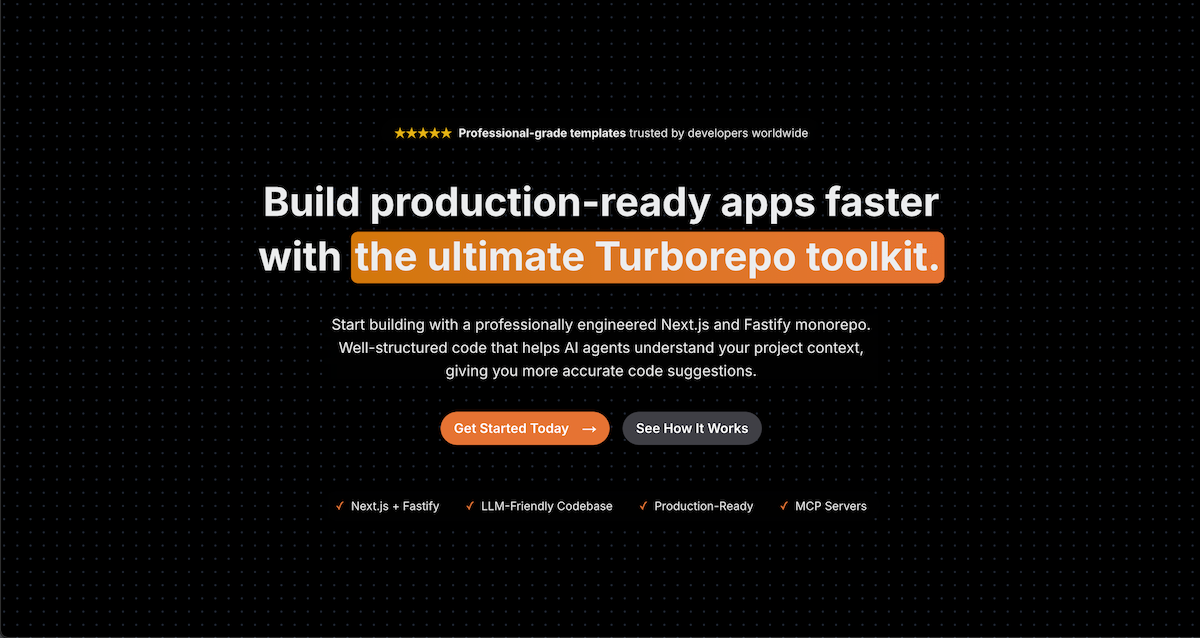How to decide where to host and deploy your SaaS
A guide to choosing the right hosting platform for your SaaS.

With the growing number of hosting and deployment options available today, deciding where to host and deploy your SaaS application can feel overwhelming. From serverless platforms like Vercel to self-hosting on VPS providers like AWS, Hetzner, or DigitalOcean, each option comes with its own set of benefits and challenges. In this guide, we’ll walk through the key factors to consider when making your choice, so you can decide which hosting solution is best for your SaaS.
1. Serverless Platforms
What you get: Simplicity and scalability
Serverless platforms like Vercel, Netlify, and AWS Lambda offer an easy way to deploy modern web applications, particularly those built with frameworks like Next.js or Nuxt.js.
Advantages
- No server management: With serverless platforms, you don’t need to manage any servers or infrastructure. This allows you to focus purely on your application’s code.
- Auto-scaling: Serverless platforms automatically scale to handle high traffic. This makes them a good fit for SaaS applications with unpredictable user loads.
- Fast deployments: Push your code and see changes live in seconds. These platforms are built for rapid development and iteration.
Disadvantages
- Limited control: You won’t have full control over the infrastructure. This can be a drawback if you need specific configurations or optimisations.
- Cost Scaling: While costs are typically low for low-traffic apps, they can scale up quickly as traffic increases.
Best for
- Applications built with frameworks like Next.js (on Vercel) or Gatsby (on Netlify).
- Projects where you want to minimise infrastructure management and focus on rapid development.
- SaaS products with unpredictable or fluctuating traffic.
2. Self-Hosting on a VPS
What you get:Full control & customisation
For those who need more control, self-hosting on a VPS (Virtual Private Server) is an excellent option. Providers like AWS, Hetzner, DigitalOcean, and Linode allow you to rent a virtual server where you have full control over the environment.
Advantages
- Full control: You manage the server’s operating system, software, and configurations. This gives you full flexibility to optimise for performance and security.
- Cost-effective: VPS providers like Hetzner and DigitalOcean often offer competitive pricing for small to medium projects. You pay for the resources you use and can scale up as needed.
- Customisation: You can configure your VPS to handle specific requirements, like custom databases, caching layers, or web server optimisations.
Disadvantages
- Server management: You’re responsible for managing updates, patches, scaling, and handling issues like security threats or downtime.
- Longer setup: Compared to serverless platforms, deploying and configuring a VPS takes more time and technical know-how.
- Scaling challenges: While you can manually scale your VPS, it doesn’t auto-scale as easily as a serverless solution. You may need to implement load balancers or other scaling mechanisms.
Best for
- SaaS applications requiring specific server configurations or advanced optimisations.
- Developers with sysadmin skills who want full control over their infrastructure.
- Projects with predictable or stable traffic where manual scaling won’t be a burden.
3. Managed Cloud Services
What you get: Flexibility with ease
Platforms like AWS Elastic Beanstalk, Heroku, and Google Cloud App Engine offer a middle ground between serverless and self-hosted solutions. These platforms provide flexibility while managing much of the infrastructure behind the scenes.
Advantages
- Managed infrastructure: Managed platforms handle most of the infrastructure tasks, such as scaling and load balancing, while still giving you some control over your app’s environment.
- Scalability: Similar to serverless solutions, these platforms scale easily as your SaaS grows.
- Fast setup: Services like Heroku allow you to get started quickly with easy deployments, while still offering more control than serverless platforms.
Disadvantages
- Higher costs: Managed services can become costly as your app scales. They often charge a premium for the ease of management.
- Less fine-tuned control: You still don’t have as much control as with a VPS, which could be limiting for some applications.
Best for
- Developers who want to minimise server management but still need a bit more flexibility than serverless platforms offer.
- SaaS applications that expect consistent growth but don’t want to deal with scaling complexities.
4. Key Factors to Consider When Choosing a Hosting Platform
When deciding where to host your SaaS, consider the following factors:
Traffic patterns
- Unpredictable or fluctuating traffic: Go serverless for automatic scaling.
- Stable or predictable traffic: Self-hosting on a VPS may offer more cost-effective options.
Technical skills
- If you have strong sysadmin skills, you can self-host on a VPS and control every aspect of the environment.
- If you want to focus on development rather than infrastructure, serverless or managed platforms are better.
Cost and scalability
- Serverless platforms start cheap but can scale up in cost as traffic grows.
- VPS hosting typically offers predictable pricing, but you’re responsible for managing the scaling process.
Control and customisation
- If your app needs custom server configurations or specific performance optimisations, self-hosting on a VPS is the way to go.
- For simple apps with no heavy backend requirements, serverless platforms can save time and effort.
Ease of use
- Serverless platforms like Vercel are easy to set up and deploy, making them ideal for startups and small teams.
- Managed services like AWS Elastic Beanstalk offer a balance of ease and control, with scalable solutions that grow with your app.
Conclusion
Deciding where to host your SaaS comes down to balancing control, scalability, cost, and ease of use. Serverless platforms like Vercel offer unparalleled simplicity and automatic scaling, while self-hosting on a VPS gives you full control over your environment. Managed cloud services provide a mix of both worlds, offering scalability with less infrastructure management.
Ultimately, the best choice depends on your app’s technical needs, expected traffic, and your own comfort level with managing servers. Take the time to evaluate your options, and you’ll find the right platform to support the growth of your SaaS.
Recommended SaaS boilerplates
You’ll find below three of the most highly recommended SaaS boilerplates that are hosted on the platforms we’ve discussed in this article.






